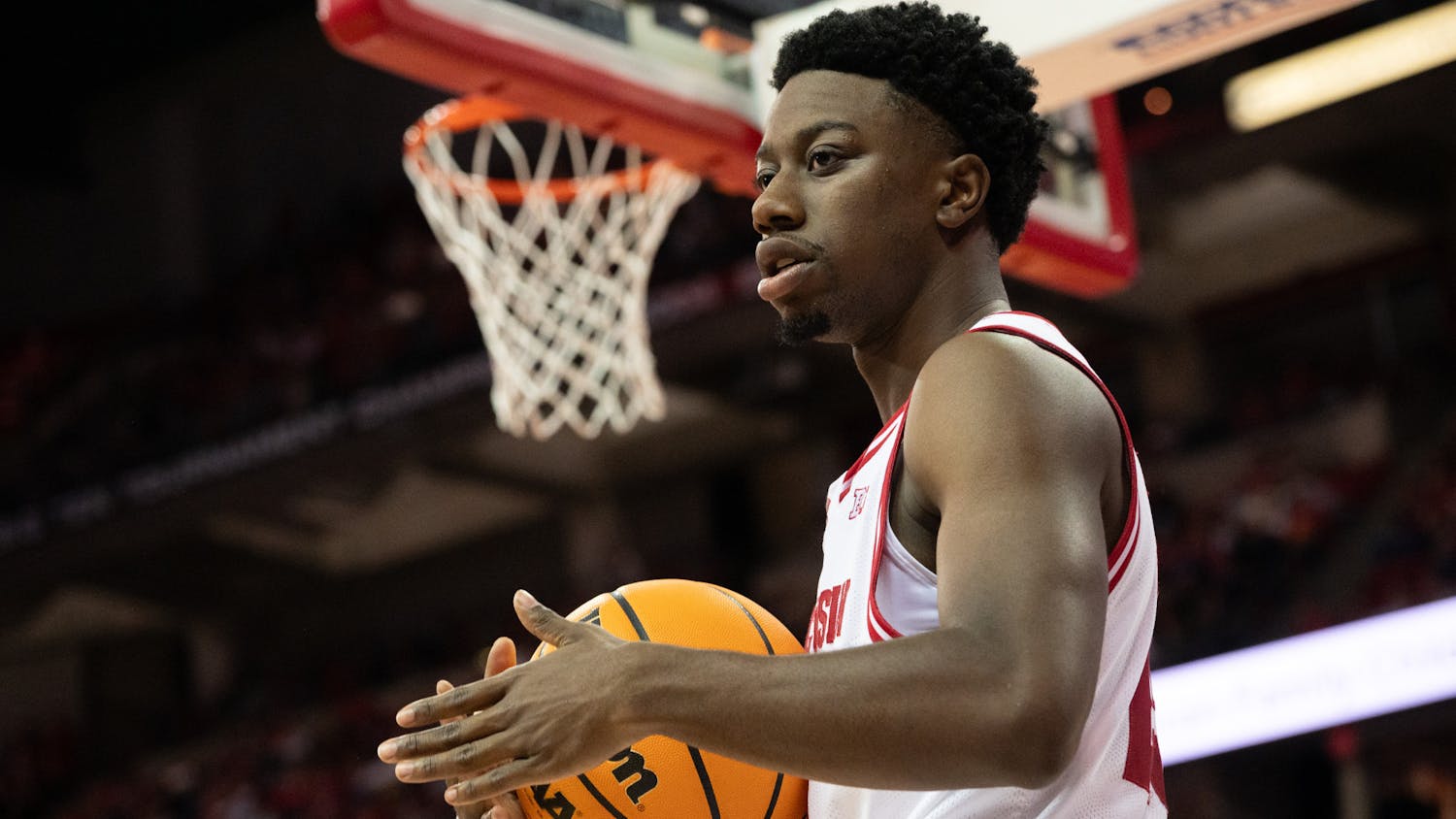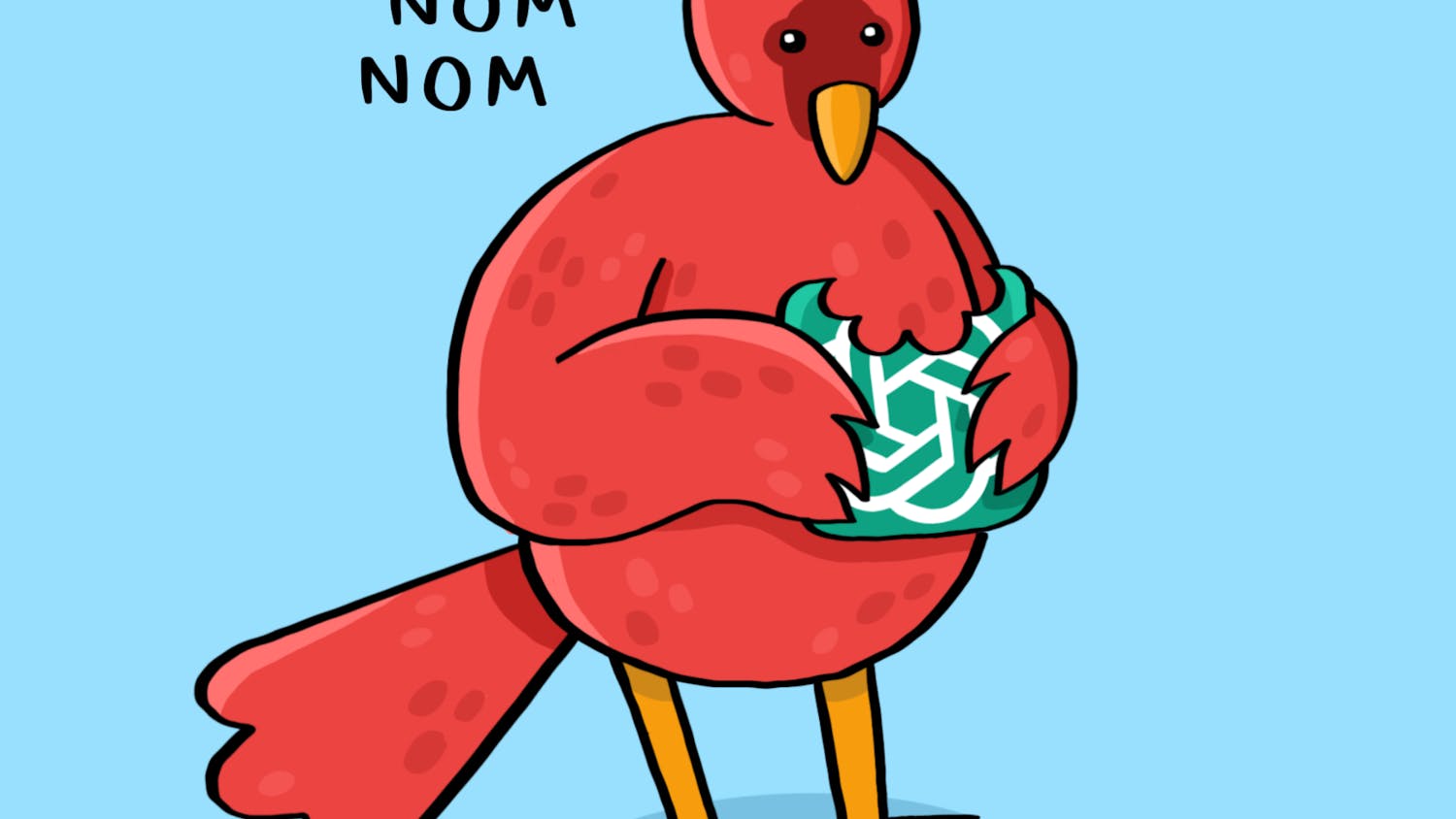University of Wisconsin-Madison assistant professor and researcher Nan Li is helping to bridge the gap between scientific research and the creative arts by sparking conversations about the importance of visual representation in understanding scientific concepts.
Li worked with a team of professionals, including Isabel Villanueva, Thomas Jilk and Dominique Brossard from UW-Madison as well as Brianna Rae Van Matre from EcoAgriculture Partners —a nonprofit that develops solutions to more sustainable land management —to analyze the effects art has on people’s understanding of climate change. Li and her team surveyed 671 adults from around the U.S. about their reactions to a Diane Burke painting titled “Summer Heat, 2020” while also taking into account the political leanings of the participants.
Burke’s painting features shades of red and blue coming together to create abstract scenes of weather and nature over a graph of carbon dioxide levels globally. This piece, along with other data visuals, was compiled into four different Instagram posts for Li’s study. Each post got a different group of survey participants.
Li’s research focused on evaluating how art and discussion around the feelings a piece evokes affect priming —exposure to stimulating media to influence one’s perspective of a specific topic — and political polarization.
One of the sample groups was instructed to reflect on an Instagram post featuring only the painting. This group reported more positive, uplifting and optimistic emotions.
The second sample group’s post had the original painting and visuals related to climate change data as well as supporting information in the post’s caption. As a whole, this group viewed the post as credible, leading Li and her team to note the successes of sharing information on social media.
Access to educational content on social media platforms like Instagram has become increasingly popular. A 2020 Pew Research study found 18% of adults primarily get their news from social media. The percentage of young adults aged 18-24 who do the same was much greater at 48%.
As a researcher in visual representations and their impacts on scientific understanding, this is quite rewarding for Li, as social media tends to be a visual-centric platform. Unfortunately, these outlets can be a hub for misinformation, making it vital to include statistics or additional research to ensure audiences are interacting with a credible source.
However, including such information can sometimes create distrust or increase polarization among political parties. This was found with the third and fourth research group, which were only shown the additional visuals and not the original painting, or saw both the painting and visuals but weren’t given time to reflect.
Li found these posts actually increased polarization among the survey participants. Historically speaking, 82% of adults identifying as Democrats view climate change as a “critical threat” whereas only 16% of Republican-identifying adults agree.
“In order for art to maximize its potential as a tool for public engagement, you really need to use it as a catalyst for triggering self-reflection,” Li said in an interview with UW-Madison Communications, emphasizing the need for art and discussions around climate change to mimic conversations with the first group.
For many, it’s hard to be motivated to understand an issue when it’s accompanied with large, inconceivable numbers and scientific jargon. But art is a unifying, universal experience. A piece like Burke’s painting is open to interpretation, leaving room for conversation between different groups.
When discussions of art are applied to subjects like climate change, those discussions help different political parties visualize effects on others lives, careers and more, making them open to further solutions on the issue, according to Li.
However, Li acknowledges that her research has some limitations. For example, her team only used one painting, by one artist and in one style. She wants to better understand how artists of different backgrounds affect art and its ability to bridge conversations between political parties as well as how audiences around the world react to this concept.
Regardless, strategies like art and communication can inspire thought and empathy that isn’t always conveyable through scientific statistics and graphs.
“It actually engages people to explore the meaning themselves,” Li said
Li and her team’s research proves that connecting both art and science limits the effects political party affiliation has on perceiving climate change as a threat. Thus, the future possibilities of art and communication can create inspiring, productive conversations that could lead to more political cooperation.






